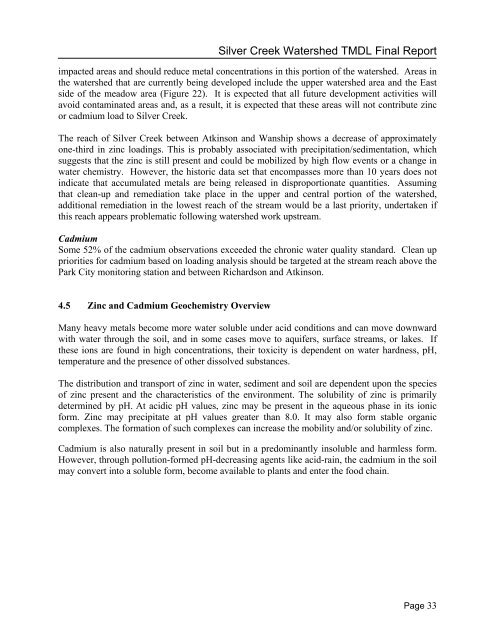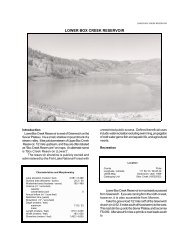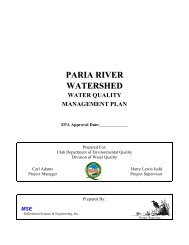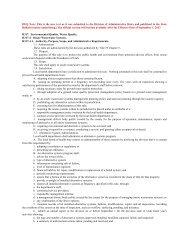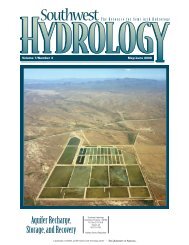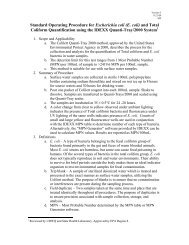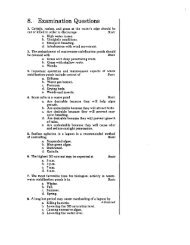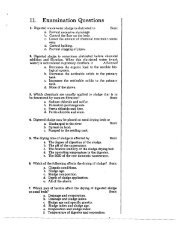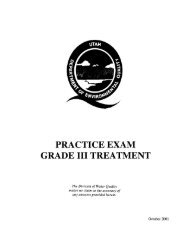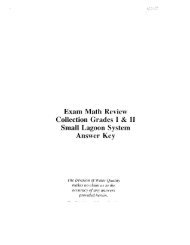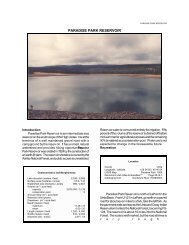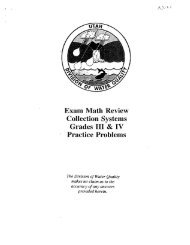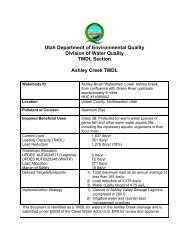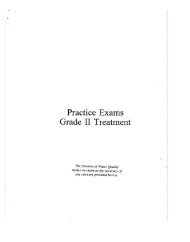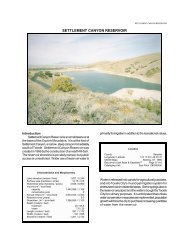Silver Creek - Division of Water Quality - Utah.gov
Silver Creek - Division of Water Quality - Utah.gov
Silver Creek - Division of Water Quality - Utah.gov
You also want an ePaper? Increase the reach of your titles
YUMPU automatically turns print PDFs into web optimized ePapers that Google loves.
<strong>Silver</strong> <strong>Creek</strong> <strong>Water</strong>shed TMDL Final Report<br />
impacted areas and should reduce metal concentrations in this portion <strong>of</strong> the watershed. Areas in<br />
the watershed that are currently being developed include the upper watershed area and the East<br />
side <strong>of</strong> the meadow area (Figure 22). It is expected that all future development activities will<br />
avoid contaminated areas and, as a result, it is expected that these areas will not contribute zinc<br />
or cadmium load to <strong>Silver</strong> <strong>Creek</strong>.<br />
The reach <strong>of</strong> <strong>Silver</strong> <strong>Creek</strong> between Atkinson and Wanship shows a decrease <strong>of</strong> approximately<br />
one-third in zinc loadings. This is probably associated with precipitation/sedimentation, which<br />
suggests that the zinc is still present and could be mobilized by high flow events or a change in<br />
water chemistry. However, the historic data set that encompasses more than 10 years does not<br />
indicate that accumulated metals are being released in disproportionate quantities. Assuming<br />
that clean-up and remediation take place in the upper and central portion <strong>of</strong> the watershed,<br />
additional remediation in the lowest reach <strong>of</strong> the stream would be a last priority, undertaken if<br />
this reach appears problematic following watershed work upstream.<br />
Cadmium<br />
Some 52% <strong>of</strong> the cadmium observations exceeded the chronic water quality standard. Clean up<br />
priorities for cadmium based on loading analysis should be targeted at the stream reach above the<br />
Park City monitoring station and between Richardson and Atkinson.<br />
4.5 Zinc and Cadmium Geochemistry Overview<br />
Many heavy metals become more water soluble under acid conditions and can move downward<br />
with water through the soil, and in some cases move to aquifers, surface streams, or lakes. If<br />
these ions are found in high concentrations, their toxicity is dependent on water hardness, pH,<br />
temperature and the presence <strong>of</strong> other dissolved substances.<br />
The distribution and transport <strong>of</strong> zinc in water, sediment and soil are dependent upon the species<br />
<strong>of</strong> zinc present and the characteristics <strong>of</strong> the environment. The solubility <strong>of</strong> zinc is primarily<br />
determined by pH. At acidic pH values, zinc may be present in the aqueous phase in its ionic<br />
form. Zinc may precipitate at pH values greater than 8.0. It may also form stable organic<br />
complexes. The formation <strong>of</strong> such complexes can increase the mobility and/or solubility <strong>of</strong> zinc.<br />
Cadmium is also naturally present in soil but in a predominantly insoluble and harmless form.<br />
However, through pollution-formed pH-decreasing agents like acid-rain, the cadmium in the soil<br />
may convert into a soluble form, become available to plants and enter the food chain.<br />
Page 33


